A bit over a year ago, I made the decision to switch from a sailboat to a power boat, and a few months after that, ended up selling Grace and purchasing Rendezvous. In the full year since I’ve owned her, here’s how things have fallen out…
The Stats
I purchased Rendezvous at the beginning of November 2018, and brought her back from Anacortes to Seattle single-handed (on a new boat!) in not-so-good weather, with a quick stop in Port Ludlow for the night.
I put around 220 hours on the engines this year, and around 170 hours on the generator. That is considerably more than I put on Grace the last two years I owned her, and I motored her at least 90% of the time.
I started taking trips on Rendezvous only weeks after purchasing her, with several in the winter months including Boat exploration, a shock and a fire and Poulsbo and Bainbridge snow adventure plus a lot of far calmer multi-day trips.
There was a trip up to Friday Harbor early in the season, and then many day trips and overnight trips with friends, family and work folks.
The big goal was a 30 day trip to and around Desolation Sound which happened in July and August, and was absolutely spectacular. I’m still working on the write up of the trip since it contained so much good stuff.
Throughout the trips and use of Rendezvous, there were good and bad things, but overall, I feel like I was on the water far more this last year than I had been in the recent past.
The Projects
It wouldn’t be a boat if it didn’t have projects, and boy did I jump in head first right away. I knew I would have to do some work on the electronics, and the interior was something both me and my husband wanted to update. I had hoped to get a year out of the power system before I replaced large portions of it, but that didn’t happen.
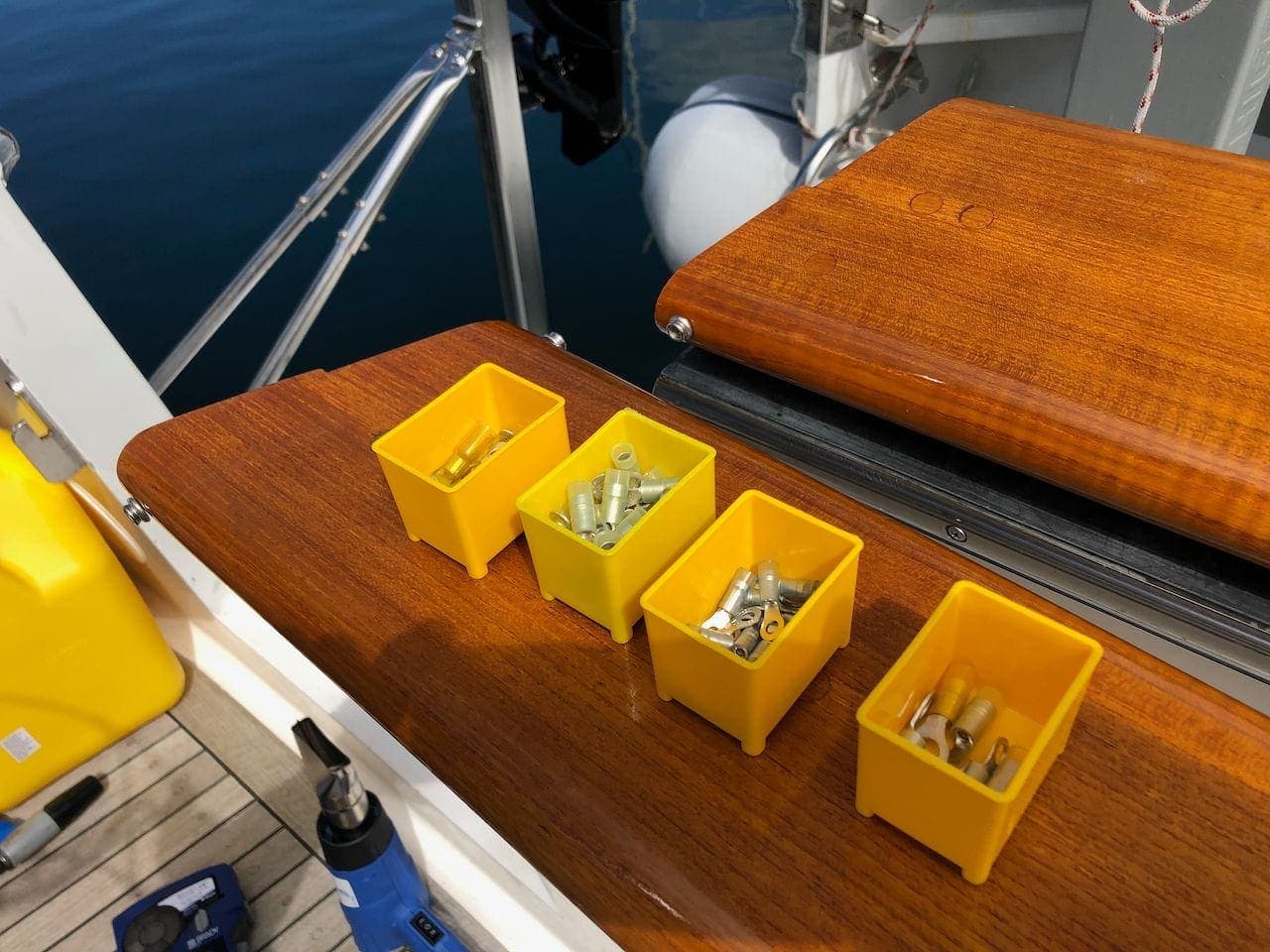
Here is a list of the major projects completed this year:
- LiFePO4 house battery bank, new alternators, Victron inverter + system
- New engine start and generator AGM batteries
- Peplink MAX transit LTE router
- weBoost LTE amplifier with Wilson antenna
- MikroTik Groove WiFi booster
- Intel NUC Linux system running SignalK
- NMEA 2000 network / Ethernet network
- Yacht Devices temp/humidity sensors
- Yacht Devices Gateway
- Actisense EMU-1 NMEA 2000 engine monitor
- Maretron DSM150 display
- Digital Yachts AIT2500 AIS Class B+ transponder
- Rose Point Nemo gateway
- Furuno TZT2 MFDs
- Furuno DRS4D-NXT radar
- Furuno RD-33 and FI-70 displays
- Furuno NavPilot 300 auto pilot
- AXIS camera server with docking and engine room cameras
- Furuno FM-4800 VHF radio
- New LED lighting everywhere
- Ultrasonic diesel tank sensor
- Radar & navigation light mount
- LCJ Capteurs Ultrasonic wind sensor
- Aqua Signal LED navigation lights
- Fusion radio & speakers
- Rocna anchor
- Mantus chain hook and dbRopes bridle
There were a lot of other smaller things, too numerous to list here. 2018/2019 has been a busy year, and 2020 doesn’t look any slower!
The Good
The Space
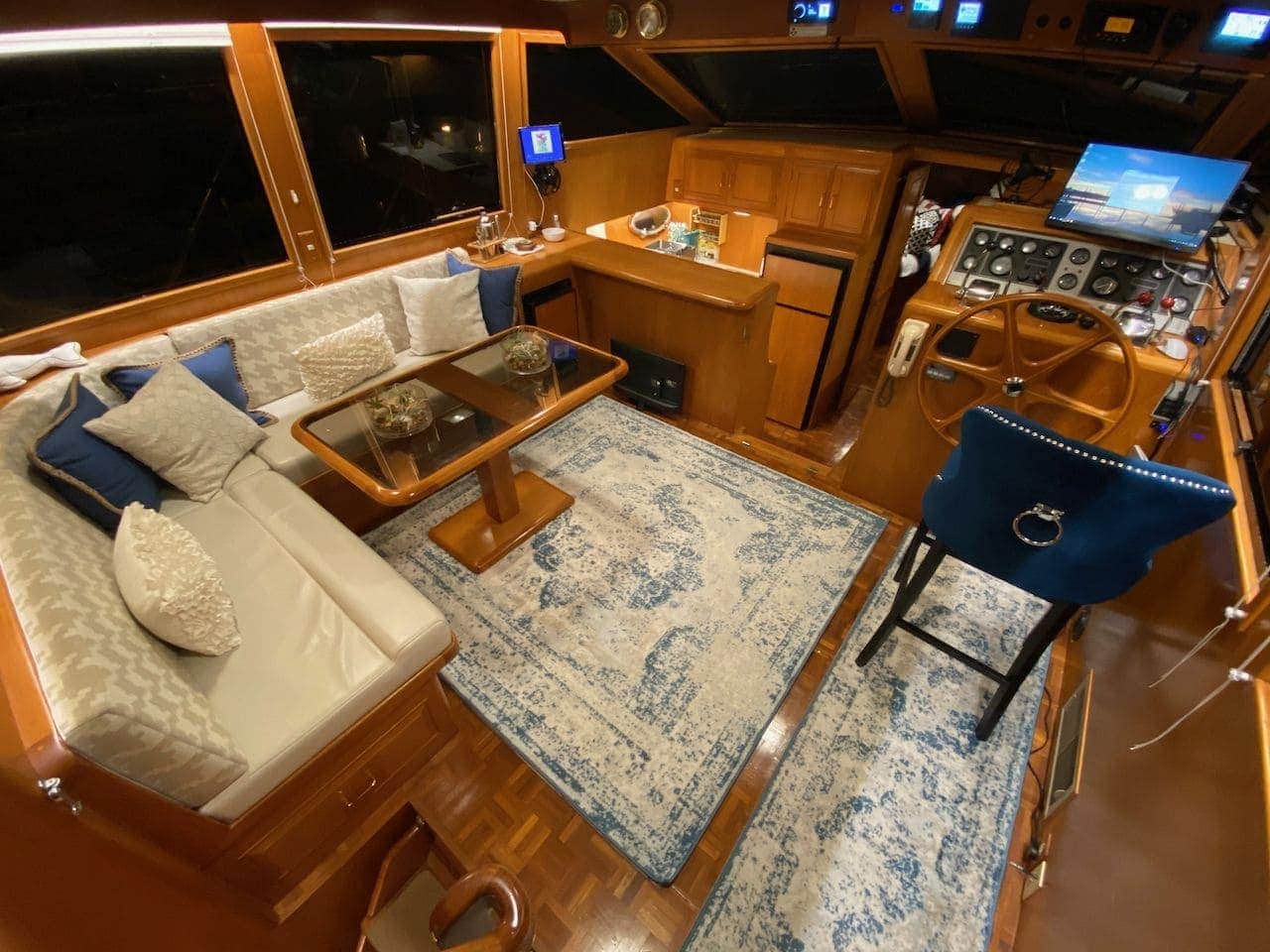
The sheer amount of space for everything is probably the biggest change and benefit.
For a crew member, this means you don’t hit your head anywhere, you don’t feel like you have some horrible back disease every time you stand up on land, and generally a more rested and comfortable experience. This is huge, as it has meant my crew has been willing to go on longer trips, and they feel more rested, are happier, and end up loving the experience more.
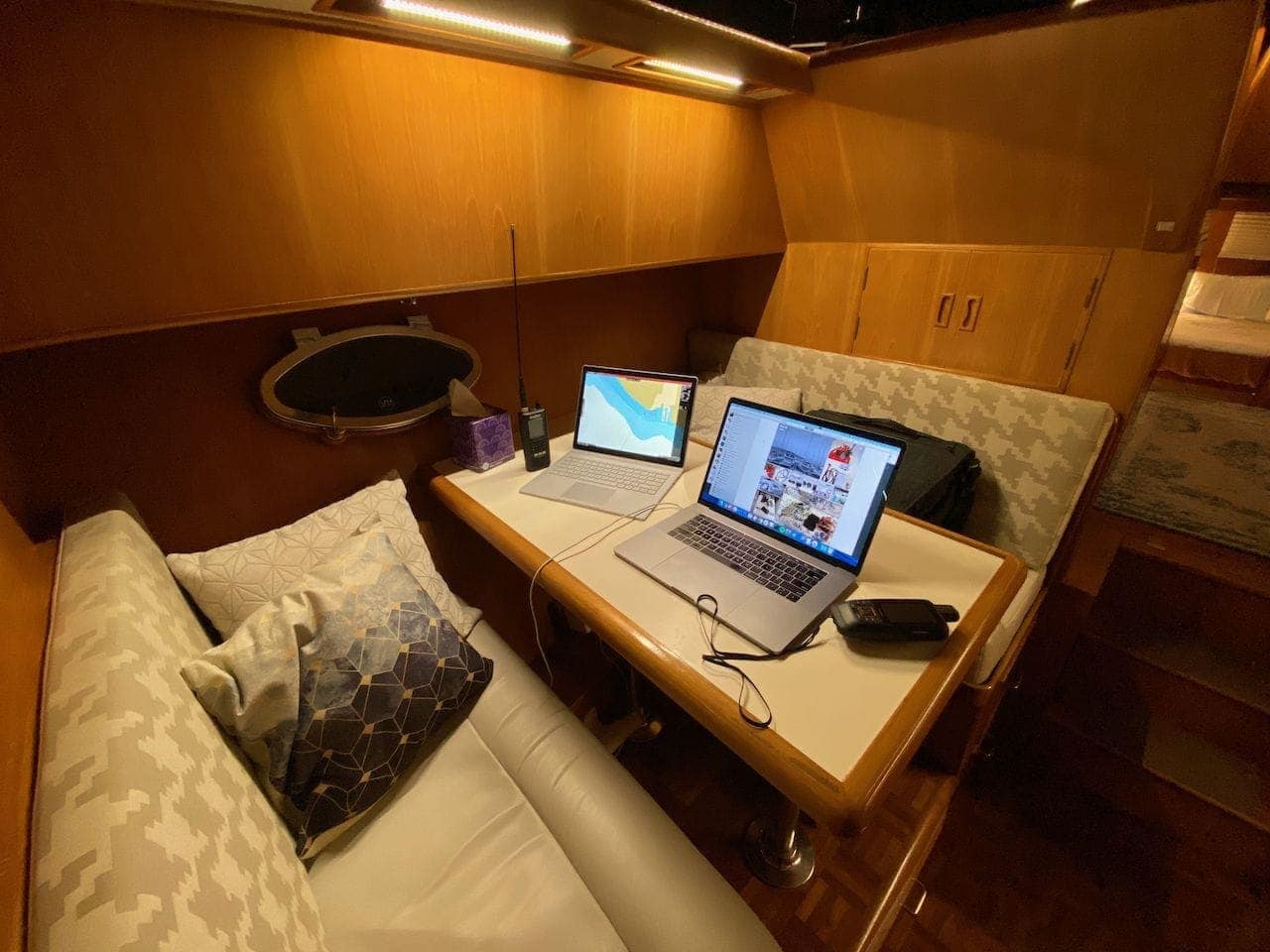
For my electronics and testing, it has been a revolution. I can have everything connected, all the time, and cycle through different manufacturers while testing something new. I have a whole cabinet dedicated to spare parts, extra devices, testing equipment, and boxes of stuff I am testing / have tested.
I also completely eliminated an on-shore storage unit that I had full of stuff. About 20% of it I recycled or threw away, and the rest came aboard. Now I have everything I need in one place, and saved several hundred dollars a month on storage.
The Speed
Coming from the sailboat world where 6 knots was an average on good days, it still is a bit of a shock that 8 knots is easy, and 11 knots is my normal cruising speed. That isn’t that much faster, but as a boater I bet you have done the math, and it can make the difference between arriving at the next anchorage tired and ready to rest, to being ready to explore.
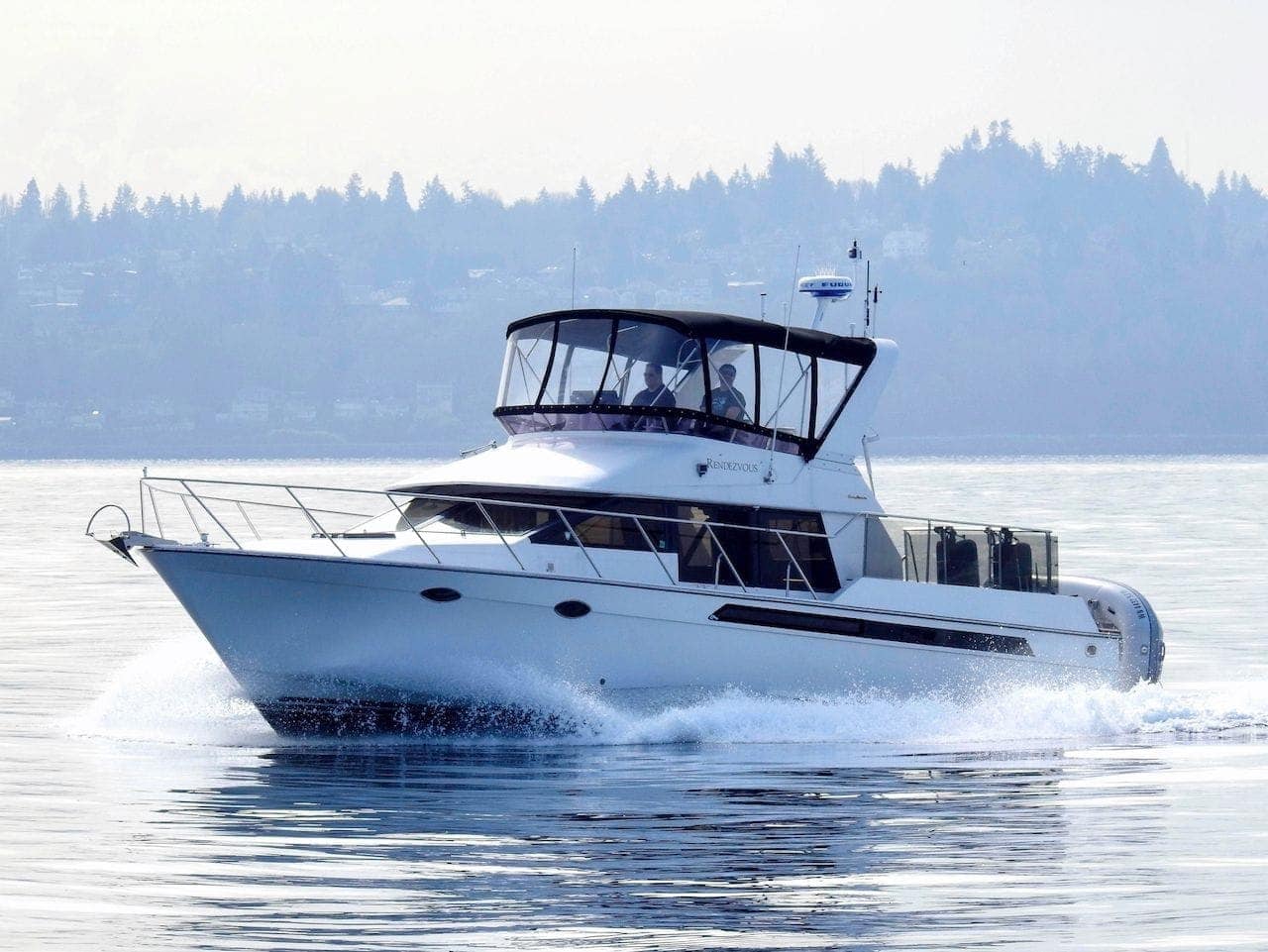
My typical longer journeys are from Seattle to the San Juan Islands, and this increase means I can get to Friday Harbor from Seattle in one day in about 6 hours. I would have never tried that in Grace, as it would be 12 hours at least, if tides were kind.
The Comfort
This is related to the space, but has more to do with the things in the boat. A full sized refrigerator/freezer, a dedicated ice machine (single most liked appliance by the crew for drinks!), walk around queen bed in the master, a sun deck where most people hang out and enjoy the sun, etc. etc.
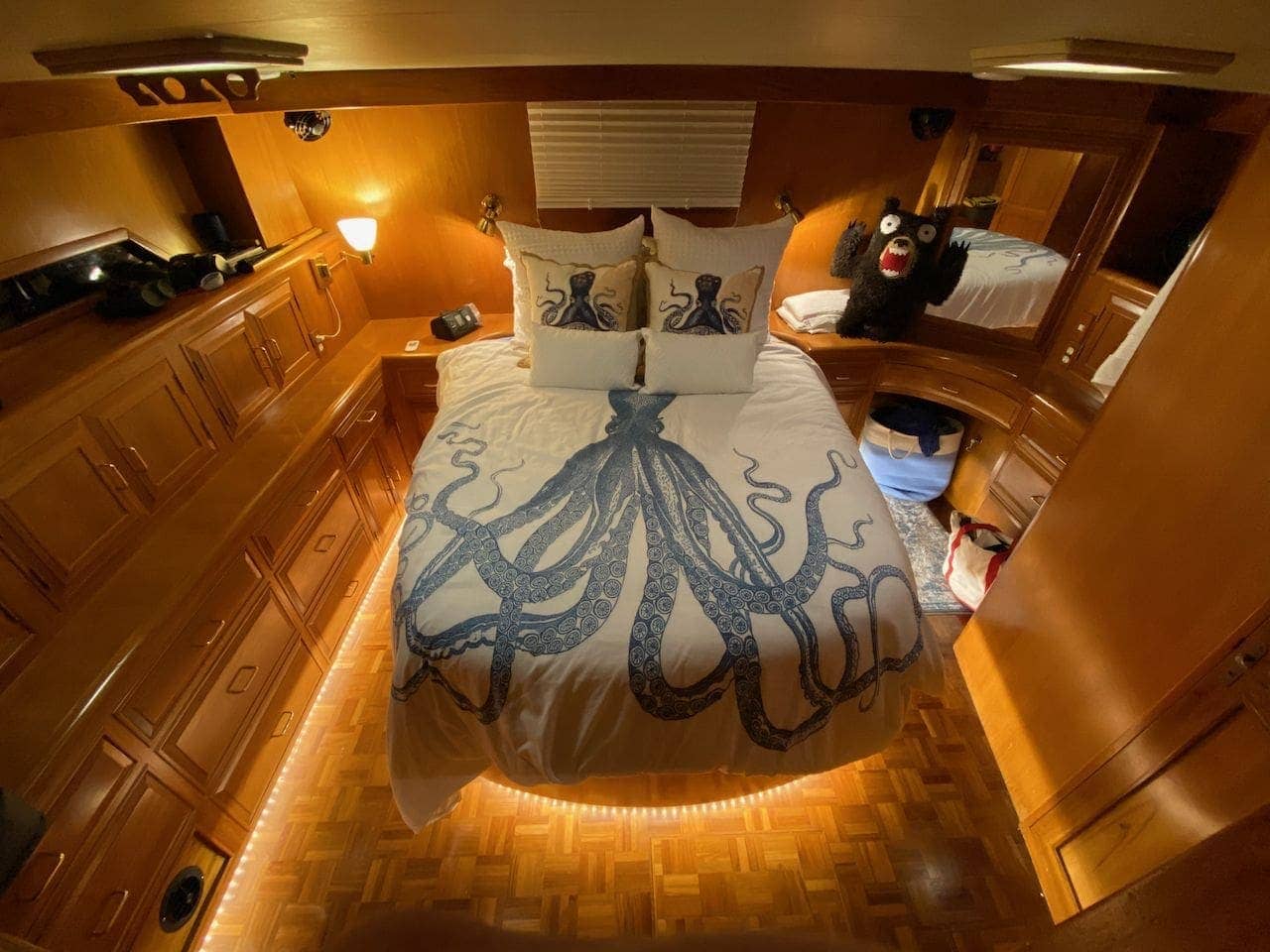
Generally speaking, I feel guilty with the level of comfort I have when I am driving, at anchor, sleeping, showering, and all of the other activities on board. I would never give up the memories I have with sailboats, and I think it makes me a more respectful boater in general, but man, the comfort level is not something I think I can ever give up!
The So-So
Docking
I had a twin-engined boat years ago, and got really good docking it, but it did not have much windage. Rendezvous turns into a sailboat at times and can be a challenge to manage. I added a good wind sensor early on, and have a dedicated screen setup for docking on my Furuno TZT2’s that show apparent/true/ground wind, my speed, and a few other things to help with things. I also switched my slip so that north winds blow me up against the dock, which makes it much easier in the summer season to have the wind help me stay put.
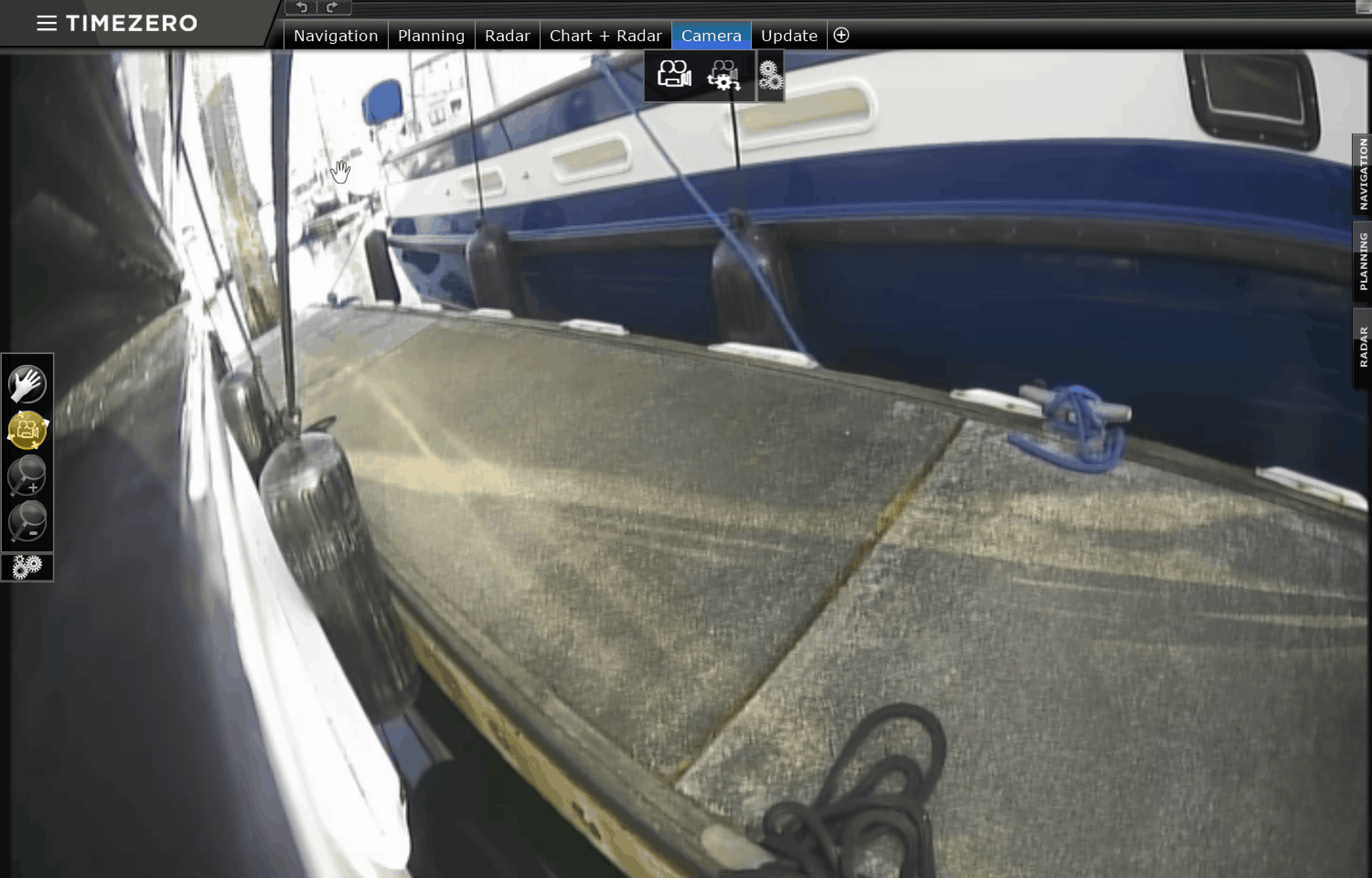
I also added a camera that looks at the edge of the rub rail and the dock so I can see where I am in relation to the dock. From the flybridge I can see amazingly well everywhere except the edge of the boat on the sides. This camera solves that.
The 1988 Volvo Penta engines tend to smoke more than modern engines (and even engines of that vintage) which I am working on, but can end up gassing the crew out if there is not much wind and I have to idle a lot. In addition, I am working with the timing and fuel lift pumps on the engines to try to reduce some hunting while at idle and in gear, which makes for bursty results.
Nevertheless, I have not had any crashes or damage, and have docked her solo a handful of times without issue. I continue to get better every time I get more practice, and am not ready for a bow thruster yet!
The Noise
The noise-proofing in Ocean Alexanders were one of the features that drew me to the brand, along with the quieter Volvo Penta engines. You can still have conversations and you’re not left with a splitting headache at the end of the day.
However, it is more noise in some places than the sailboat. All of my sailboats had the engine in the companionway coming down into the salon, and it was really quite loud near that area, which was typically the galley. I’d say they are pretty close in terms of overall effect, but there is definitely more at times with Rendezvous, especially at higher RPMs.
The Challenges
The Fuel Bill
I knew it was going to be more expensive, and I did copious research on how much I was willing to spend and put up with in terms of fuel burn. At normal cruising speeds, Rendezvous burns a gallon a mile, which is right on par with what I expected. Slowing her to 8 knots reduces that to about 3/4 a gallon a mile, which is even better.
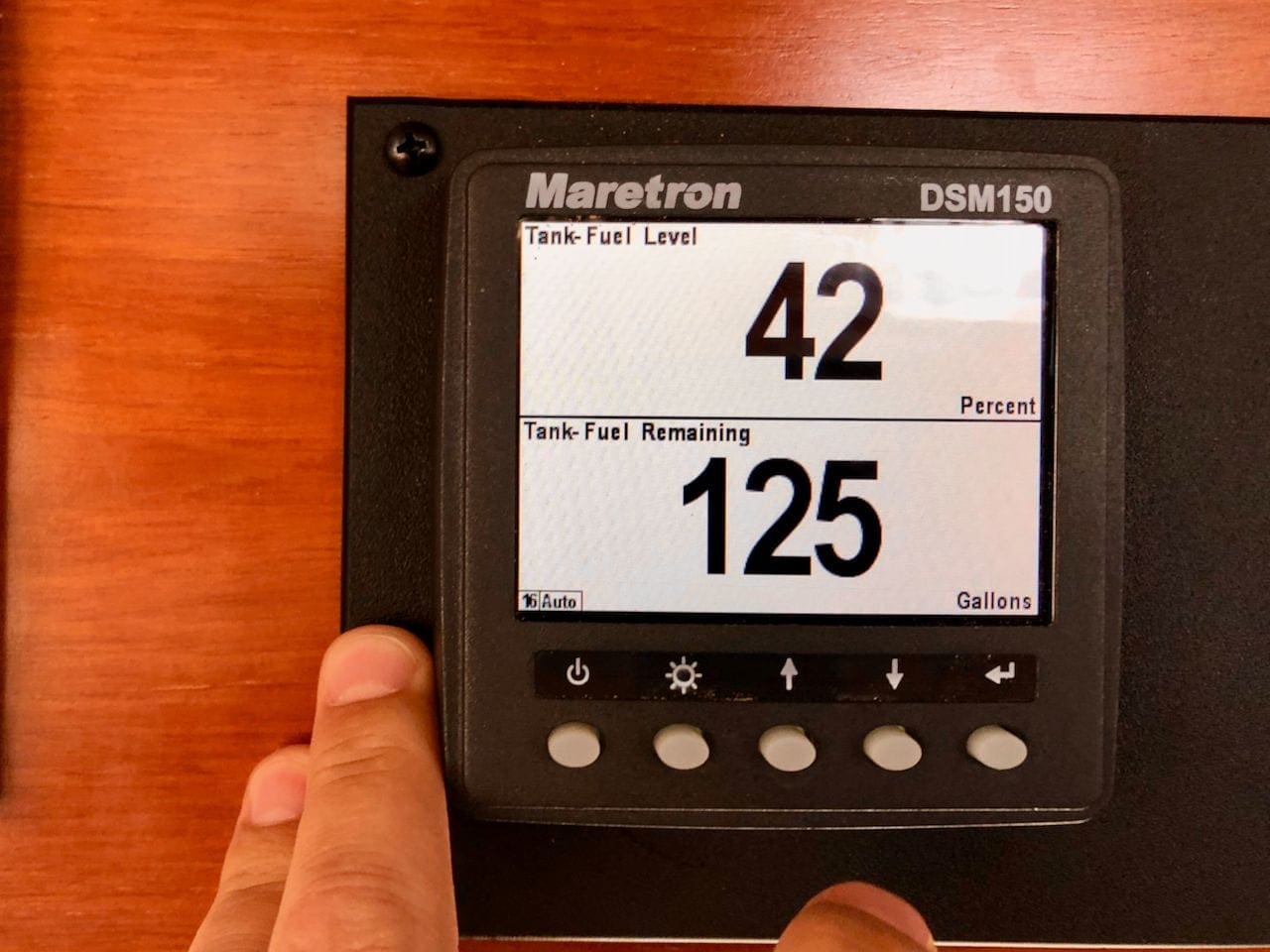
Even so, at 220 hours of engine time, that is a lot more diesel than a sailboat! If we throw out 20 hours of that to idling or engine testing, oil changes, alternator testing, etc. we have around 200 hours. If we assume I went 11 knots all season (I definitely did not – most of the Desolation trip was much slower) then I should have been burning 11 gallons an hour, for a total of 2,200 gallons of fuel. At $3.50 a gallon, that would be over $7,700 in fuel.
I’d say a more reasonable number would be 200 hours of total motoring and an average speed of 9 knots, which puts me at 1,800 gallons of fuel and closer to $6,300.
However, I did get fuel from Brownsville Marina twice this year (large fill-ups) at $2.50 or some super low price. On the opposite end of the spectrum, I had to fuel while on Desolation at Gorge Harbor, and it came out to about $7 a gallon, and I took on almost 200 gallons!
So this is definitely a big change. However, I was prepared for it, and I am OK with it.
The best example of why I am OK with it is our Desolation trip – we were motoring for around 80 hours, and it was a 26 day trip. We motored at slower speeds since we were with another slower boat, but I’ll still do the calculations with the worst-case 1 gallon/mile formula using a 9 knot average speed:
80 hours * 9 knots = 720 gallons
$3.50 / gallon = $2,520
$2,520 / 26 days = $96 / day in fuel. Double that for food & drink and all of the other random things you need to do, and it’s still under $200/night for everyone aboard (2-3 people). You couldn’t find as nice of a hotel, especially in the places we went, for that money!
I’m happy to pay more for the extra comfort, space, power, and everything else. You just have to be realistic going in, which I was.
The Other Costs
This is less to do with a power boat and more to do with the size and complexity. Because there is more space in a 46′ power boat than a sailboat, you can cram more things into tight spaces. With all of that extra stuff (generator, multiple battery banks) comes more complexity and more cost.
Also because Rendezvous was built in 1988, and Grace in 2000, there are older methods and older things that need more maintenance to keep them going longer. Don’t get me wrong, Ocean Alexander has amazing build quality, and I would say in many areas, superior to Beneteau (Grace’s manufacturer) but as the old adage goes, it has more to do with how a boat was maintained, not who built it. Rendezvous was lovingly and meticulously cared for by the two previous owners, and it shows.
Everything to take care of the larger and more complex boat is a factor higher, and while I expected it, I don’t have to like it ?
Where are the sails?
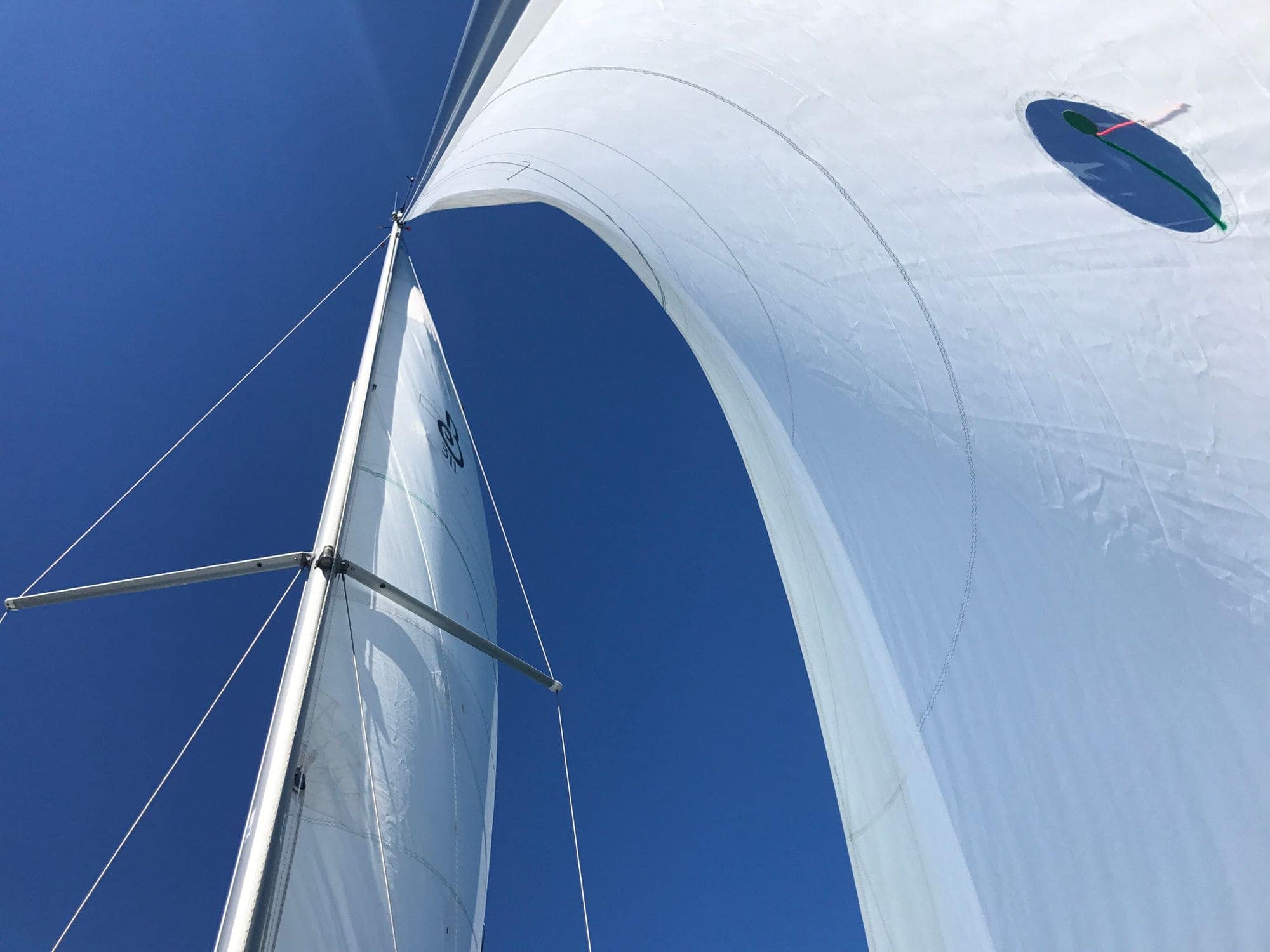
The one thing I definitely miss is the quiet of the water lapping at the hull and the hum of the keel when the sails are trimmed just right, and you’re flying along with the wind powering you alone. ⛵️
Conclusion?
I would not change my decision, and I do not regret it in any way. I love the change it has brought to my crew, our comfort, our range and ability to do more in worse weather, and our overall happiness.
I love Rendezvous, and look forward to making many awesome memories in the future!

